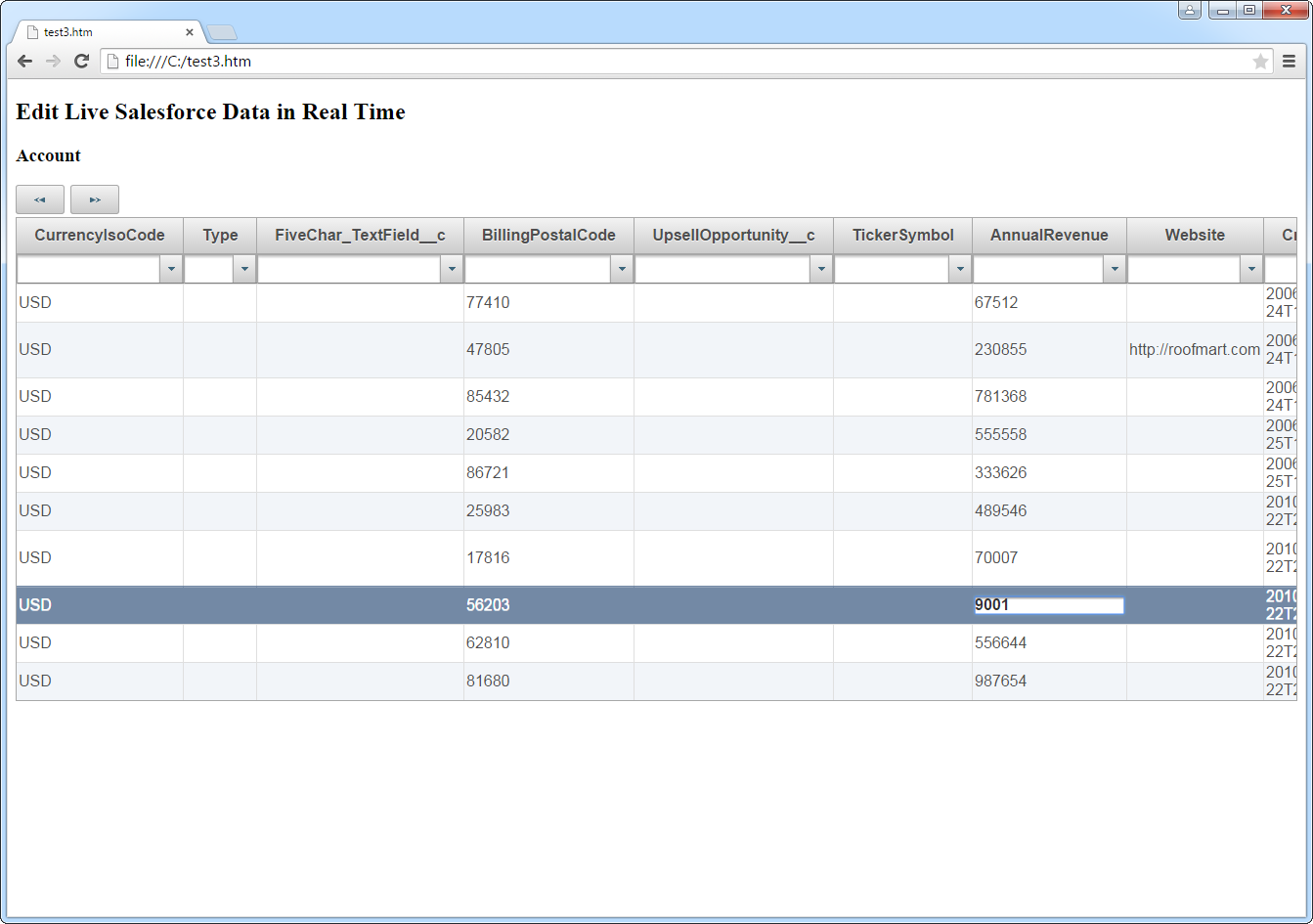DataBind Wijmo Grid to WooCommerce Data
The API Server, when paired with the ADO.NET Provider for WooCommerce (or any of 200+ other ADO.NET Providers), provides WooCommerce data as Web services, which enable connectivity to live data. This article shows how to consume JSONP-formatted WooCommerce data from a Wijmo Grid.
Set Up the API Server
Follow the steps below to begin producing secure WooCommerce OData services:
Deploy
The API Server runs on your own server. On Windows, you can deploy using the stand-alone server or IIS. On a Java servlet container, drop in the API Server WAR file. See the help documentation for more information and how-tos.
The API Server is also easy to deploy on Microsoft Azure, Amazon EC2, and Heroku.
Connect to WooCommerce
After you deploy the API Server and the ADO.NET Provider for WooCommerce, provide authentication values and other connection properties needed to connect to WooCommerce by clicking Settings -> Connections and adding a new connection in the API Server administration console.
WooCommerce supports the following authentication methods: one-legged OAuth1.0 Authentication and standard OAuth2.0 Authentication.
Connecting using one-legged OAuth 1.0 Authentication
Specify the following properties (NOTE: the below credentials are generated from WooCommerce settings page and should not be confused with the credentials generated by using WordPress OAuth2.0 plugin):
- ConsumerKey
- ConsumerSecret
Connecting using WordPress OAuth 2.0 Authentication
After having configured the [ plugin, you may connect to WooCommerce by providing the following connection properties:
]
- OAuthClientId
- OAuthClientSecret
- CallbackURL
- InitiateOAuth - Set this to either GETANDREFRESH or REFRESH
In either case, set the Url property to the URL of the WooCommerce instance.
You can then choose the WooCommerce entities you want to allow the API Server to access by clicking Settings -> Resources. This article uses Orders as an example.
Authorize API Server Users
After determining the OData services you want to produce, authorize users by clicking Settings -> Users. The API Server uses authtoken-based authentication and supports the major authentication schemes. Access can also be restricted based on IP address; by default only connections to the local machine are allowed. You can authenticate as well as encrypt connections with SSL.
Create a Real-Time Grid
Follow the steps below to consume WooCommerce data from the Wijmo JavaScript controls:
- Load the required Wijmo, jQuery, and Knockout libraries:
<script src="http://code.jquery.com/jquery-1.11.1.min.js"></script>
<script src="http://code.jquery.com/ui/1.11.0/jquery-ui.min.js"></script>
<!--Theme-->
<link href="http://cdn.wijmo.com/themes/aristo/jquery-wijmo.css" rel="stylesheet" type="text/css">
<!--Wijmo Widgets CSS-->
<link href="http://cdn.wijmo.com/jquery.wijmo-pro.all.3.20161.90.min.css" rel="stylesheet" type="text/css">
<!--Wijmo Widgets JavaScript-->
<script src="http://cdn.wijmo.com/jquery.wijmo-open.all.3.20161.90.min.js"></script>
<script src="http://cdn.wijmo.com/jquery.wijmo-pro.all.3.20161.90.min.js"></script>
<script src="http://cdn.wijmo.com/interop/wijmo.data.ajax.3.20161.90.js"></script>
<!--Knockout JS Library-->
<!-- Both of the links below can work -->
<script src="http://cdn.wijmo.com/wijmo/external/knockout-2.2.0.js"></script>
<!--<script src="http://cdn.wijmo.com/amd-js/3.20161.90/knockout-3.1.0.js"></script>-->
<!--Wijmo Knockout Integration Library-->
<script src="http://cdn.wijmo.com/interop/knockout.wijmo.3.20161.90.js"></script>
-
Create a ViewModel and connect to it using the ODataView. You will need to replace the placeholder values for the URL of the API Server, an API Server user, and the authtoken for that user.
<script id="scriptInit">
$.support.cors = true;
var viewModel;
function ViewModel() {
var ordersView = new wijmo.data.ODataView("http://MyServer:MyPort/api.rsc/Orders", {
ajax: {
dataType: "jsonp",
username: "MyUser",
password: "MyAuthtoken",
data: { "$inlinecount": null }
},
pageSize: 10
});
ordersView.refresh();
ordersView.nextPage();
this.orders = ordersView;
this.prevPage = function () {ordersView.prevPage();};
this.nextPage = function () {ordersView.nextPage();};
}
$(document).ready(function () {
viewModel = new ViewModel();
ko.applyBindings(viewModel, $(".container").get(0));
});
</script>
-
DataBind: Below is a simple table with some paging buttons, which you can paste into the body section of your markup.
<h2>Connect to Live WooCommerce Data in Real Time</h2>
<h3>Orders</h3>
<div>
<button title="previous page" class="pagebuttons" data-bind="click: prevPage, button: {}"><span class="ui-icon ui-icon-seek-prev" /></button>
<button title="next page" class="pagebuttons" data-bind="click: nextPage, button: {}"><span class="ui-icon ui-icon-seek-next" /></button>
</div>
<table id="demo-grid" data-bind="wijgrid: {
data: orders,
showFilter: true,
allowPaging: true,
pagerSettings: { position: 'none'},
columnsAutogenerationMode: 'append',
}" >
</table>
Below is the resulting grid. You can filter and sort through pages of WooCommerce data.


